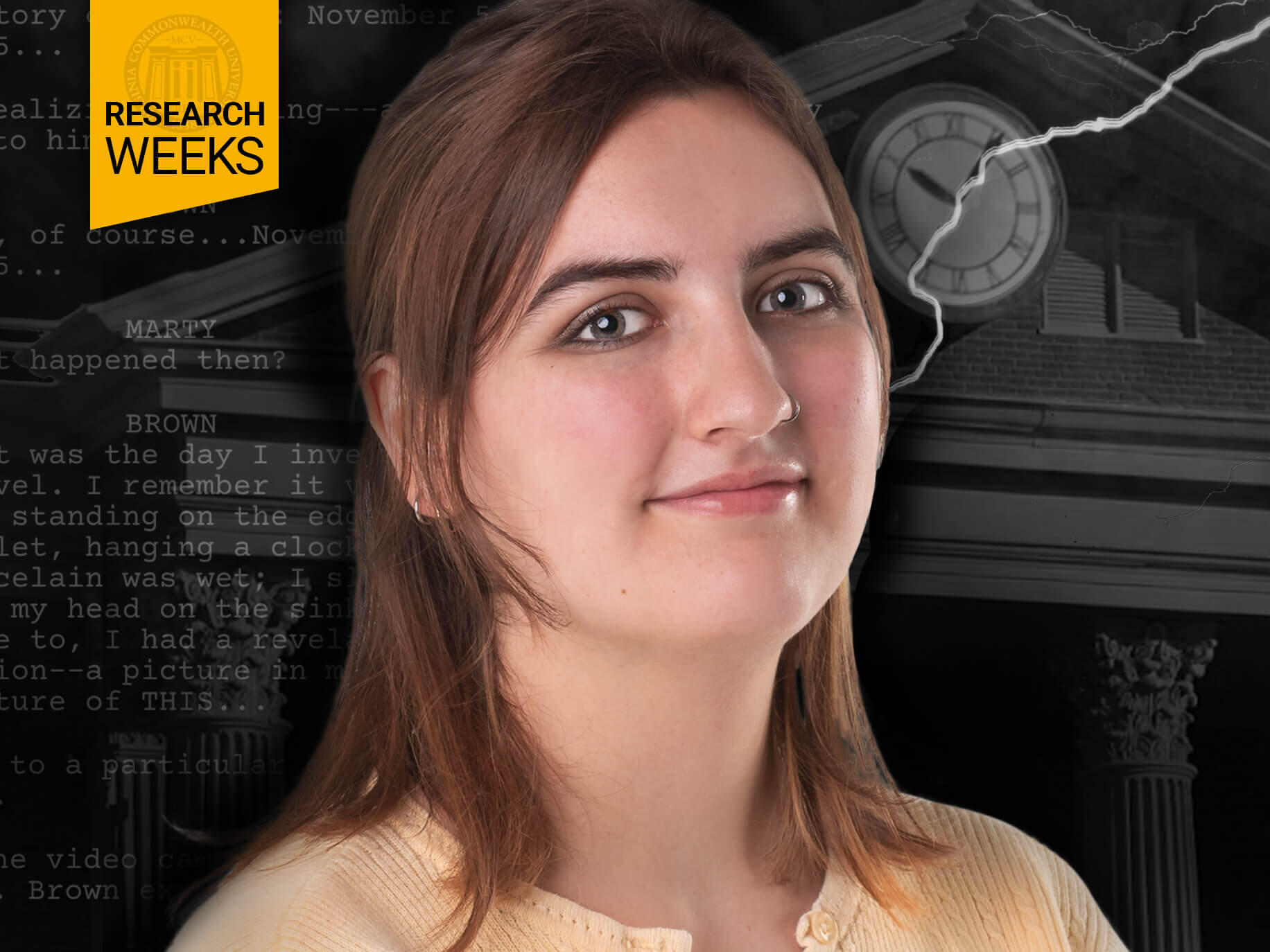
April 18, 2022
VCU junior gets an inside look at the ‘Back to the Future’ trilogy
Share this story
As part of Research Weeks (March 17–April 29) we are highlighting some of the remarkable research done by undergraduates at VCU. Research Weeks features a wide variety of projects in multiple disciplines from across the university.
Audrey Engel and her brother grew up watching the 1985 film “Back to the Future” and its two sequels. So it wasn’t a leap for her to use the film as the backdrop for her research and grant.
A junior at Virginia Commonwealth University majoring in communication arts, Engel began the project in her Honors College class last year. She subsequently received an Undergraduate Research Opportunity Program grant to continue her work over the summer. The original film focuses on a teenager who accidentally is sent back to 1955 in a time-traveling DeLorean automobile.
“I got interested in themes in the ‘Back to the Future’ trilogy and how the movies had aged over the years,” she said. “I’ve heard people refer to the films, especially the first, as nostalgic, and I thought that was interesting.”
Engel had originally pitched a paper on the film’s director, Robert Zemeckis, to her professor and mentor, Christopher Irving, an assistant professor in the Department of Communication Arts in the School of the Arts.
“She started to craft an ambitious and thought-provoking paper,” he said. “Audrey’s critical thinking and intellectual curiosity are inspiring and, as a professor, make my job easy. Any questions she came up with, she showed determination to find answers to, and Audrey always proved up to any critical and constructive feedback.”
“Back to the Future” is an iconic and classic film that has withstood the test of time, he said.
“Great stories not only tell us about ourselves, but also about the society in which they were created,” he said. “Placing ‘Back to the Future’ in the context of the 1980s nostalgia for the ’50s was an inspired move by Audrey and makes me appreciate all of it even more.”
With Irving’s help, Engel was able to email interview questions to the film’s co-writer, Bob Gale.
“I had never interviewed someone before. His answers were really interesting and essential,” she said. “At first, I was just researching how the film was nostalgic and how that was portrayed. But he said it was never intended to be nostalgic. He wanted to make it light and fun.”
His answers changed the focus of her paper. Gale told Engel in his email responses that she may be confusing “nostalgia with the concept of romanticizing the past, which was not our intention either, but is probably inevitable in doing a comedy about the past,” he wrote. “Regardless, our objective in making the choices we made in depicting 1955 was to show differences between 1985 and 1955.”
He went on to write, “I think the basic human elements of [the films] are the reasons why the movies are still enjoyable and appealing. Every person wonders what their parents were like as kids, and what they did on their first date. This transcends all cultures and time periods.”
Engel was interested in how the filmmakers brought imagery of the 1950s television shows into the movies.
“They shot the movies in the backlot so they could keep it controlled,” she said. “They would make the 1980s look more grimy and dirty than the 1950s. They also used a different color palette for the 1950s. They wanted the town to look pristine so there was no smoking in the film.”
Engel’s questions impressed Gale with their originality, Irving said.
“He’s given so many interviews about the film over the years that he was surprised to finally get asked something different,” Irving said.
Engel learned a great deal about the film during the research process. She also became more comfortable with conducting research and navigating through a difficult project.
“The conversations I had with professor Irving and Bob Gale are something I will remember and take with me,” she said.
Subscribe to VCU News
Subscribe to VCU News at newsletter.vcu.edu and receive a selection of stories, videos, photos, news clips and event listings in your inbox.






